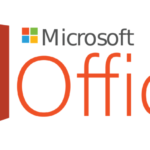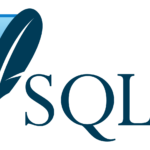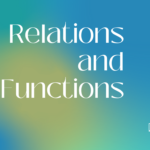Xml
Extensible markup language is known as xml. It is a markup programming language that establishes a set of guidelines for document encoding in a way that is both machine and human-readable. Since it was created to store and convey data, xml is frequently used to represent structured data across a wide range of applications.

Advantage and disadvantage of xml
Advantages of xml.
- Readability – xml programming is meant to be self-explanatory and human-readable. Its format and markup elements make it simple for consumers and developers to fully understand the data it represents.
- Platform and language independence – because xml is platform-independent, it may be utilized with a range of computer languages and operating systems. Because of this, it can communicate data with many various systems and platforms.
- Extensibility – because xml programming is extensible, users may create custom markup structures and tags to suit their needs. Due to its adaptability, it may be used in a wide range of applications and sectors.
- Data separation – xml separates data from presentation, which means that the information and its formatting are kept in different places. Because of this division, updating and changing data is simpler and has no impact on how it is presented.
- Compatibility with current systems – xml may be incorporated with current technologies and systems, enabling data transmission across systems easier without needing significant modifications to the current infrastructure.
Disadvantages of xml.
- Verbosity – when compared to alternative data formats like json or binary formats, xml may be verbose. In order to express the same data, more characters are needed, which might increase file size and network bandwidth utilization.
- Processing costs – processing xml documents, especially big ones, can be computationally expensive. Performance may be affected by this, especially in circumstances with limited resources.
- Complexity – working with and understanding xml’s sophisticated syntax and structure can be difficult for beginners or non-technical users. Xml documents may need specialized expertise and equipment to create and maintain.
- Lack of strict data type or constraints – although xml programming permits the establishment of schemas to check document structure, xml itself does not do so. Inconsistencies or mistakes may result if the data is not handled or checked correctly.
- Lack of support for some contemporary features – because xml was created in the late 1990s, it might not be compatible with all contemporary functionality and data types. More specialized forms, such as json or protocol buffers, may be more appropriate for some use scenarios.
Best characteristics of xml
The positive benefits of xml include the following.
- Self-descriptive and understandable by humans – xml programming is intended to be readily understood by both computers and people. It is extremely legible and self-descriptive because of its markup tags and organized syntax, enabling developers and consumers to understand the data it represents.
- Platform and language independence – because xml is platform-independent, it may be utilized with a wide range of computer languages and operating systems. As a result, it is very customizable for data interchange across various systems and platforms, supporting interoperability.
- Extensibility – because xml is so extensible, users may create custom markup structures and tags to suit their needs. Due to its adaptability, it may be used for a number of applications and sectors and can handle different data needs.
- Data separation and modularity – xml programming distinguishes between data and the way it is presented or formatted. This division encourages modular and reusable code, making it simpler to update and modify data without affecting how it is presented, or vice versa.
- Hierarchical structure – which resembles a tree. This format makes it simpler for people to understand the data by effectively portraying complicated and hierarchical data structures.
- Schema support – to specify and enforce the structure, data types, and constraints of xml documents, xml enables the use of xml schema definition (xsd) or document type definition (dtd). Schemas make it possible to validate data and guarantee its consistency and integrity.
- Broad industry acceptance – for data sharing, configuration files, and information representation, xml has been extensively used across a variety of sectors and areas. Its widespread acceptance and appeal make it an established and mature technology.
- Compatibility with existing systems and technologies – xml programming is compatible with current systems and technologies, and it may be smoothly integrated with them. It provides a standardized and compatible format for data transmission, facilitating data sharing between various platforms and applications.
- Support for internationalization and multilingual data – xml programming enables Unicode encoding, enabling the representation of data in many languages and character sets. This allows internationalization and multilingual data. This qualifies it for use in systems and applications that must handle several languages on a worldwide scale.
- Tooling and ecosystems – xml programming has a robust ecosystem of programs, frameworks, and libraries that make it easier to manipulate, convert, and validate xml. These tools give developers a wide range of alternatives for productively handling xml data.
Format in xml
Xml programming uses elements, attributes, and text content to structure data.
Here is an illustration of the fundamental xml format.
<?Xml version=”1.0″ encoding=”utf-8″?>
<rootelement attribute=”value”>
<childelement>your content</childelement>
<anotherelement>you can add more text content</anotherelement>
</rootelement>
Let’s dissect the elements that make up this xml format.
- Xml declaration – the xml programming declaration is in the first line <?Xml version=”1.0″ encoding=”utf-8″?>. It details the character encoding and the version of xml that is being used.
- Root element – all other elements in the xml document are contained within the root element, which is named <rootelement>. It serves as the root node of the xml hierarchy.
- Attributes – an attribute included within an element is represented by the syntax attribute=”value”. Additional information about the element is provided through attributes.
- Child elements – the child elements of the root element are <childelement> and <anotherelement>. They can contain text content, additional components, or a combination of both and are nested within the root element.
- Text content – examples of text content within the child components include “your text content” and “you can add more text content.” the actual data held within the xml structure is represented by text content.
Nesting components, building hierarchical structures, and expressing complicated data connections are all possible using xml. A child element can be nested to any depth, and elements can have multiple attributes.
It’s crucial to keep in mind that xml programming is adaptable, and the precise format might change depending on the needs of the application or data model. The previous example shows a fundamental xml structure, however, actual xml documents can be more complicated and may comply to certain xml schemas or document standards.
Xml full form
Xml stands for extensible markup language.
External xml entity
An entity that is specified outside of the actual xml document but is referred to in it is known as an external xml programming entity. Xml entities are used to construct shortcuts for commonly used data or to represent reusable pieces of material.
External xml entities come in two different variants.
- External parsed entity – an external parsed entity is one that is located in a different file and is referred to using an entity reference in the xml document. The external entity’s location is indicated by the entity reference, which enables the xml document to incorporate or interpret its information.
- External unparsed entity – this term refers to data that is not intended to be parsed as part of the xml document, but is still equivalent to an external parsed entity. In general, binary data or non-xml material, such photos or multimedia files, are included using unparsed entities.
Xml prettifier
Xml prettifiers are programs or functions that format xml documents by inserting line breaks, indentation, and uniform spacing in order to make them easier to read. Prettifying xml makes the document’s structure simpler for people to comprehend and traverse. Many xml prettifier utilities are accessible, both online and in software libraries.
Here are a few popular options.
- Online xml prettifiers.
- Xml formatter by freeformatter – https://www.freeformatter.com/xml-formatter.html
- Xml beautifier by code beautify – https://www.codebeautify.org/xmlviewer
Command-line/xml editors.
- Xmllint (command-line tool bundled with libxml2 library)
- Notepad++ (text editor with xml formatting plugins)
Programming language libraries.
- Python – lxml, xml.dom.minidom
- Java – apache xerces2-j, dom parser
- C# – system.xml.linq.xdocument, system.xml.xmldocument
These programs generally take an xml document as an input and apply formatting rules to produce an output that is correctly indented and attractively arranged. Depending on the tool or library being used, the particular features and settings may change.
It’s important to note that many text editors and integrated development environments (ides) have xml formatting features as well, allowing you to prettify xml documents within the editor itself. These characteristics may frequently be changed to meet your preferences for layout and indentation.
Online format xml
These web tools can be used to prepare or enhance xml documents.
- Xml formatter by freeformatter.
Website – https://www.freeformatter.com/xml-formatter.html
- Xml beautifier by code beautify.
Website – https://www.codebeautify.org/xmlviewer
- Xml tools – xml formatter by xml.com.
Website – https://xml.com/tools/xmltools/
You may put your xml material into these online tools, and they will format it by adding indentation, line breaks, and the right amount of spacing to make it more legible.
Xml format
A popular markup language known as xml (extensible markup language) establishes a set of guidelines for encoding texts in a way that is both machine- and human-readable. Data is often organized, stored, and transferred between many platforms and systems using xml.
This is an illustration of xml syntax.
<?Xml version=”1.0″ encoding=”utf-8″?>
<root>
<element attribute=”value”>content</element>
<nested>
<child>text</child>
</nested>
</root>
Let’s break down the structure of this xml document.
The xml declaration <?Xml version=”1.0″ encoding=”utf-8″?> specifies the version of xml being used and the character encoding.
The <root> element serves as the root element of the xml document.
Inside the root element, there is an <element> element with an attribute named “attribute” and a value of “value”. The element contains the text “content”.
There is also a <nested> element within the root element, which itself contains a <child> element with the text “text”.
Xml file
A text-based file that applies to the syntax and guidelines of xml is known as an xml file. It normally has the.xml file extension and includes hierarchically organized structured data. Xml files are used for many kinds of things, including expressing sophisticated data structures, storing configuration settings, and communicating data across computers.
What is the xml file
A text-based file that complies with the syntax and guidelines of xml (extensible markup language) is known as an xml file. It is a file format used to store and send hierarchically organized structured data. Elements, attributes, and values are arranged in a tree-like structure to make up an xml file’s content.
Any kind of structured data that has to be kept in an organized fashion, including configuration settings, data records, document markup, and other types of information, may be found in xml files. An xml file’s specific structure and content are determined by the application or domain it is used for.
Xml meaning
Extensible markup language is known as xml. It is a markup language that establishes a set of guidelines for document encoding in a way that is both machine and human readable. Xml was created to make it easier to store, exchange, and transmit data between many platforms and systems.
Xml schema
A specification used to specify the structure, data types, and restrictions of an xml document is known as an xml schema, sometimes known as an xml schema definition (xsd). It offers a mechanism to specify the guidelines and specifications for the structure and content of xml data.
The xml schema specification, which is expressed in xml, acts as a guideline or agreement for verifying xml documents. It outlines the permitted elements, properties, data types, and relationships in xml documents.
Xml vs html
Both the markup languages xml (extensible markup language) and html (hypertext markup language) are used to structure and organize material. Despite certain similarities, they are different in their objectives and characteristics.
Xml.
- The main purpose of xml is to store and move structured data.
- It doesn’t offer preset tags or elements and instead focuses on specifying the data’s structure.
- With xml, users may design their own tags and the hierarchical connections that connect them.
- Specialized software or programming languages often use xml parsers to process xml documents.
- Xml is frequently used for complicated data structures, configuration files, and data transfer.
Html.
- Html has predefined tags and components that form the structure of a web page.
- Html is designed for producing and presenting material on the web.
- The visual presentation of material, including headers, paragraphs, pictures, links, tables, and forms, is the main focus of html.
- Users may view and interact with html pages visually thanks to web browsers, which interpret html texts.
- Html also enables the addition of fundamental semantics and structure to material, such as the marking of headers, lists, and emphasis.
The main differences between xml and html are listed below.
- In contrast to html, which is used to display information on websites, xml is largely used for storing and sharing data.
- Preset tags – because xml doesn’t include any preset tags, users are free to create their own tags. The tags and components of html, in contrast, are predefined and specifically designed for online content.
- Data structure vs. Presentation – while html focuses on displaying material with visual styling, xml focuses on representing data structures.
- Parsing and rendering – html pages are rendered by web browsers, whereas xml documents are parsed and processed by specialized programs or computer languages.
Xml document
A file or data structure that complies with the syntax and guidelines of xml (extensible markup language) is known as an xml document. It is a text-based hierarchy of components, attributes, and values-based representation of structured data.
An optional xml declaration that identifies the character encoding and the version of xml being used is the first element of an xml document. The root element, which acts as the foundation of the xml structure, comes after the declaration. Nested elements, attributes, and text content can all be contained within the root element.
Open xml file
You can use a text editor or an xml-specific editor or viewer to access an xml file.
Here are a few typical choices.
- Text editor – you may use any text editor, such as visual studio code, textedit, or notepad for windows or mac. You may read and change the contents of the xml file by simply opening it in a text editor.
- Integrated development environment (ide) – an ide like eclipse, intellij idea, or visual studio can offer additional tools for reading and manipulating xml files if you’re working on software development or xml-related activities. These ides frequently provide plugins or specialized xml editors.
- Xml editor/viewer – xml-specific syntax highlighting, validation, and other capabilities are available in specialized xml editors and viewers. Xmlspy, oxygen xml editor, and notepad++ (with xml plugins) are a few well-known examples.
- Web browser – in some circumstances, you may just open the xml file in a web browser to see what’s within. This method is mostly useful for examining xml files and might not offer advanced editing capabilities.
Xmlschema
A specification used to specify the structure, data types, and restrictions of an xml document is an xml schema, also known as an xml schema definition (xsd). It offers a means of outlining the guidelines and specifications for the structure and content of xml data.
A contract or plan for verifying xml documents is an xml schema. It outlines the permitted elements, properties, data types, and relationships in xml documents. To validate and confirm the accuracy of xml data, one can utilize xml schema, which is expressed in the xml language.
An xml schema is able to define.
- Elements – the xml document’s hierarchy and elemental structure.
- Attributes – the permitted attributes and their associated data types for each element.
- Data types – the many data kinds, including strings, integers, dates, and custom types, that can be used as element values and attribute values.
- Cardinality – the rules governing how often items can appear, such as whether they are necessary, optional, or permitted multiple repetitions.
- Constraints – extra regulations and requirements that the xml document must meet, such as value ranges, uniqueness, or regular expression-based patterns.





































































































































































